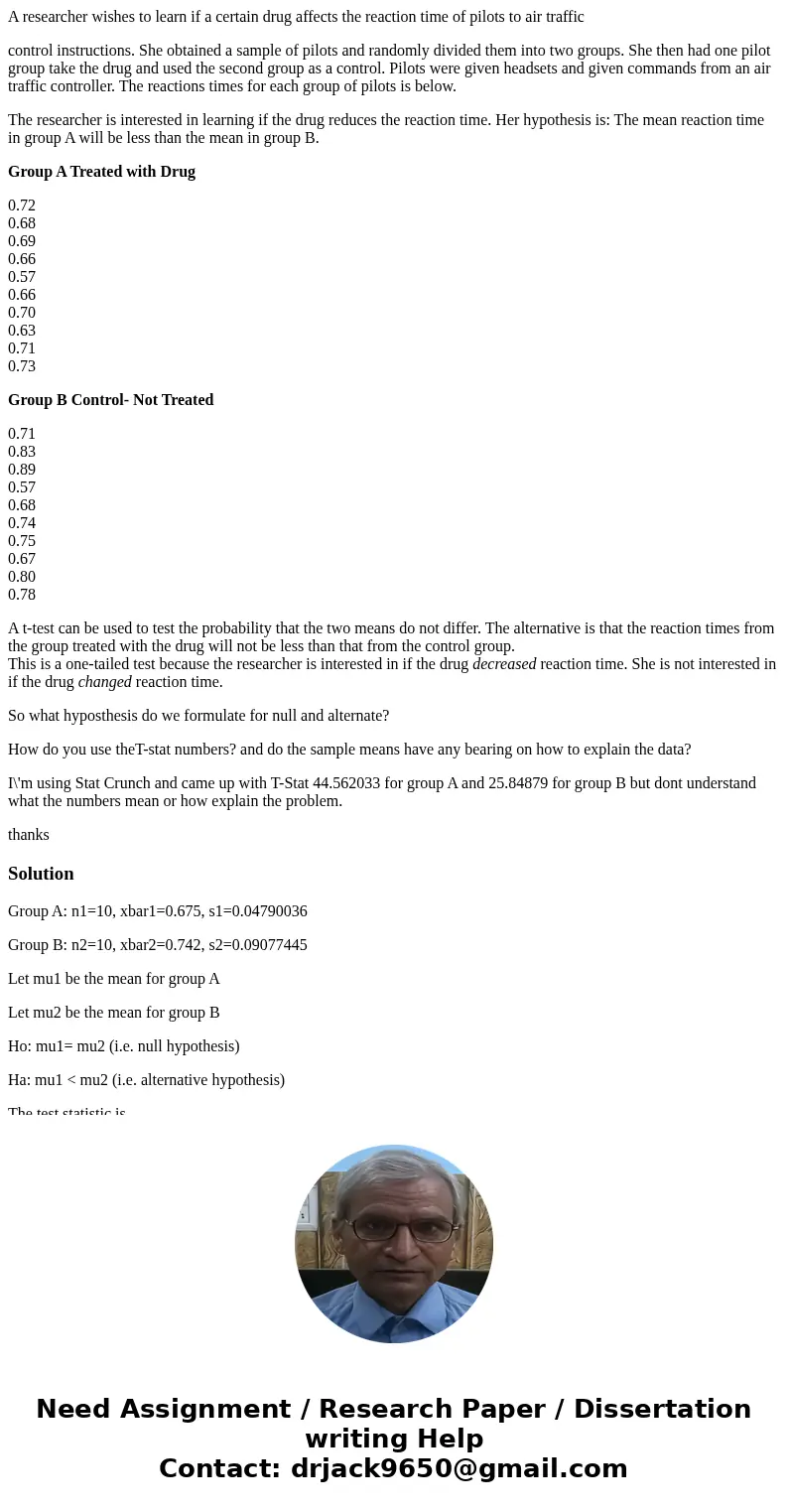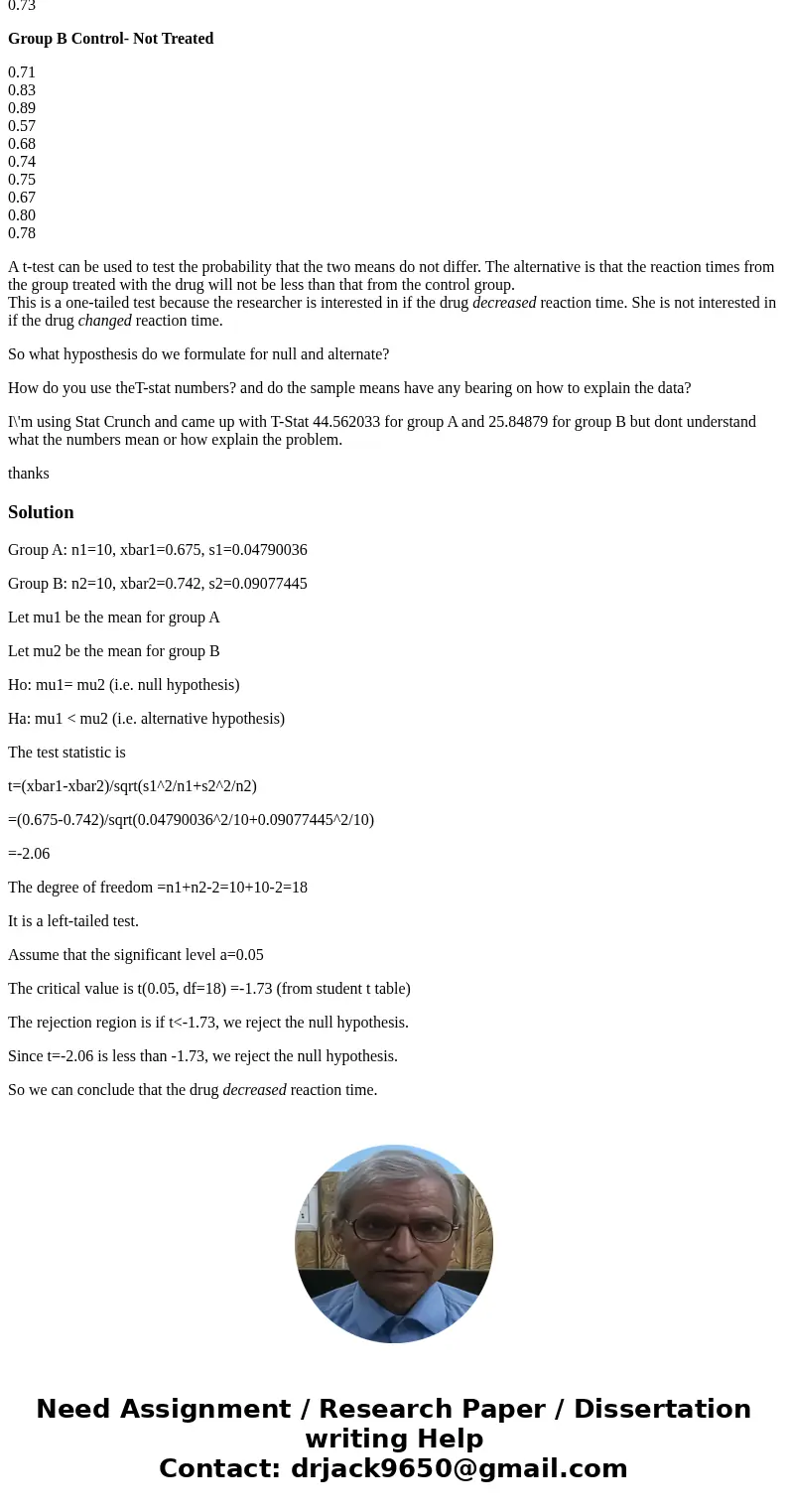A researcher wishes to learn if a certain drug affects the r
A researcher wishes to learn if a certain drug affects the reaction time of pilots to air traffic
control instructions. She obtained a sample of pilots and randomly divided them into two groups. She then had one pilot group take the drug and used the second group as a control. Pilots were given headsets and given commands from an air traffic controller. The reactions times for each group of pilots is below.
The researcher is interested in learning if the drug reduces the reaction time. Her hypothesis is: The mean reaction time in group A will be less than the mean in group B.
Group A Treated with Drug
0.72
0.68
0.69
0.66
0.57
0.66
0.70
0.63
0.71
0.73
Group B Control- Not Treated
0.71
0.83
0.89
0.57
0.68
0.74
0.75
0.67
0.80
0.78
A t-test can be used to test the probability that the two means do not differ. The alternative is that the reaction times from the group treated with the drug will not be less than that from the control group.
This is a one-tailed test because the researcher is interested in if the drug decreased reaction time. She is not interested in if the drug changed reaction time.
So what hyposthesis do we formulate for null and alternate?
How do you use theT-stat numbers? and do the sample means have any bearing on how to explain the data?
I\'m using Stat Crunch and came up with T-Stat 44.562033 for group A and 25.84879 for group B but dont understand what the numbers mean or how explain the problem.
thanks
Solution
Group A: n1=10, xbar1=0.675, s1=0.04790036
Group B: n2=10, xbar2=0.742, s2=0.09077445
Let mu1 be the mean for group A
Let mu2 be the mean for group B
Ho: mu1= mu2 (i.e. null hypothesis)
Ha: mu1 < mu2 (i.e. alternative hypothesis)
The test statistic is
t=(xbar1-xbar2)/sqrt(s1^2/n1+s2^2/n2)
=(0.675-0.742)/sqrt(0.04790036^2/10+0.09077445^2/10)
=-2.06
The degree of freedom =n1+n2-2=10+10-2=18
It is a left-tailed test.
Assume that the significant level a=0.05
The critical value is t(0.05, df=18) =-1.73 (from student t table)
The rejection region is if t<-1.73, we reject the null hypothesis.
Since t=-2.06 is less than -1.73, we reject the null hypothesis.
So we can conclude that the drug decreased reaction time.


 Homework Sourse
Homework Sourse